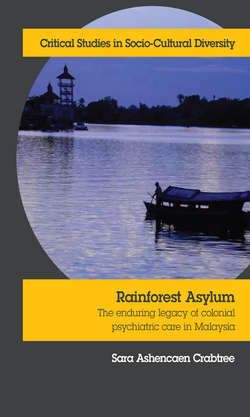Читать книгу Rainforest Asylum - Sara Ashencaen Crabtree - Страница 10
На сайте Литреса книга снята с продажи.
A guide to terms and semantics
ОглавлениеAfter grappling with the ethics of what constitutes confidentiality issues in research and to whom or how this should be extended, as well as for whose interests, I have decided on a compromise in which both the names of all participants have been carefully disguised, as has the name of the hospital. The geographical location of the hospital is implied but not specified, as clarification of the role the hospital plays in the wider, multicultural community is essential to our understanding of its local and regional importance.
Furthermore, I regularly refer to people admitted to the hospital as ‘patients’ rather than using the more progressive and popular term ‘service user’. This latter term has become ubiquitous in the UK, for example, where it is strongly associated with consumer choice towards psychiatric services (including the issue of the right to refusal of services). It emphasises individual rights and empowerment and stands in contrast to the more passive term of ‘patient’. Therefore, my reasons for not using the term ‘service user’ are conscious and pointed, and first of all relate to the fact that primarily the term is in rare currency in Malaysia. It is also one that is not used by informants at the study site, and I consider it more in keeping with an ethnographic approach not to impose titles relating specifically to the context, but which are nonetheless unfamiliar to it. The term ‘patient’ by contrast is one generally utilised by parties employed, admitted or visiting the hospital, and is therefore the one I have adopted throughout this study.
In addition, the hospital is occasionally referred to as an ‘asylum’ by some participants. This term however carries very powerful connotations, as, for example, has been used to notable effect by Erving Goffman in describing the almost complete lack of autonomy characteristic of the ‘total institution’ in which all normal functions of life are carried out in a regimented fashion under a single supervisory authority (Goffman, 1991). Some of the findings discussed in the study depict institutional practices at Hospital Tranquillity, which are commensurate with Goffman’s terminology and illustrative examples. I have therefore appropriated the term ‘asylum’ and use it in a deconstructive manner to describe certain aspects of hospital policy and episodes of patient care, which I feel comply rather more with a highly custodial and disempowering environment for patients and for staff, than with the practices compatible with Western contemporary consumer ideology. However, equally I recognise that the term ‘asylum’ also corresponds to the notion of a haven, which holds historical resonances to the establishment of such institutions, as explored in more detail in Chapter Three. Additionally, in Chapter Four, the first of the chapters on fieldwork, this tension is explored in more detail in relation to participant experiences of the psychiatric institution as both imprisoning and as acting as a refuge. Finally, in relation to the process of fieldwork, I refer to those interviewed as both ‘respondent’ and ‘participant’. I am conscious that I use these terms according to subtle nuances, in that ‘respondent’ tends to indicate to me a more formalised interview relationship than that implied by the latter term. Nonetheless, for the reader’s benefit I would conclude by saying that in effect these terms are used more or less synonymously.
